“The right injection molding material can enhance the product’s functionality, durability, and aesthetic appeal. Conversely, an ill-suited choice can compromise its performance and marketability.”
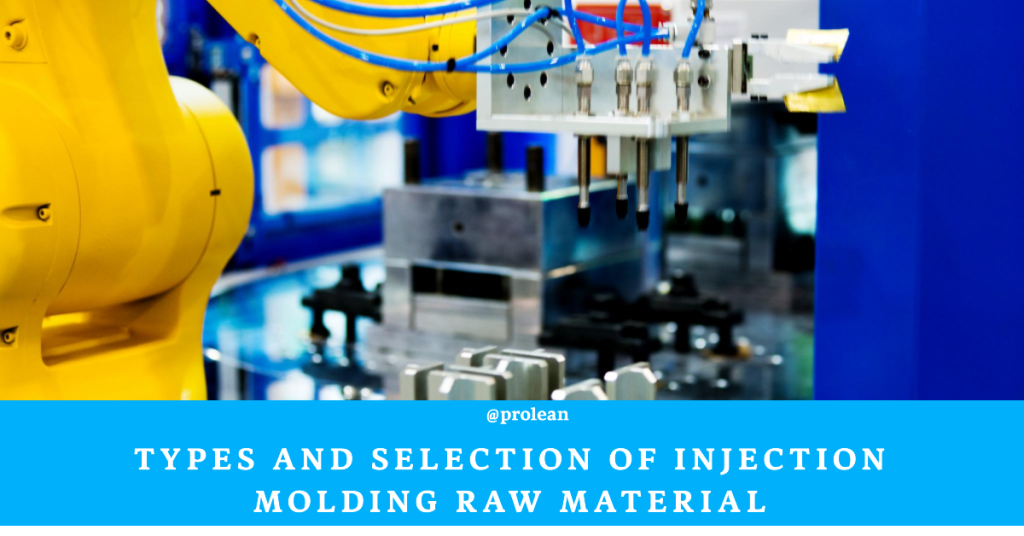
There are several methods in modern manufacturing, and injection molding is one of them. This process involves intricate melting injection molding raw materials and injecting them into pre-designed molds to form various items. The diversity of materials offers unique properties and capabilities to the table. It allows the creation of different parts and products for industries, from automotive to consumer products.
Let’s discuss injection molding raw materials in depth, thermoplastics, thermosetting plastics, metals & alloys, selection procedure, their preparation for molding, etc.
Types of Injection Molding Raw Materials
The materials used can significantly influence the final product’s properties, such as strength, flexibility, heat resistance, and aesthetic appeal. So, understanding these materials is essential to optimizing product design and functionality. Next, we can categorize these materials into thermoplastics, thermosetting plastics, and metals.
1. Thermoplastic Raw Materials
Thermoplastics resins are a prominent category in injection molding materials. They are known for their versatility and can be melted and reshaped multiple times without altering their chemical properties. This recyclability makes them an eco-friendly option in the manufacturing world.
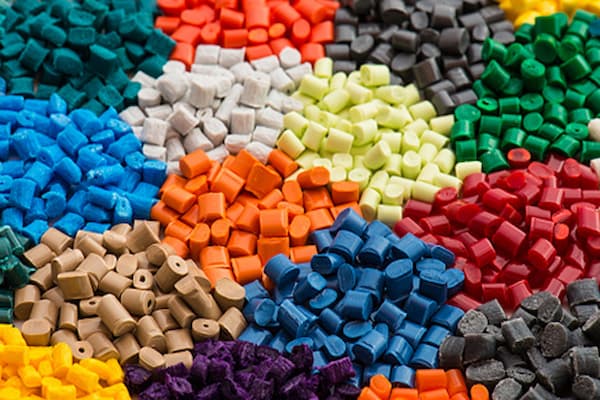
Thermoplastic resins
The molding temperature for thermoplastics varies depending on their specific type. Manufacturers must carefully control this temperature to maintain material integrity. Additionally, thermoplastics’ versatility allows for various finishes and colors, enhancing the product’s aesthetic value.
2. Thermosetting Plastics
In contrast to thermoplastics, thermosetting plastics undergo a chemical change when molded. Once set, parts become rigid and retain their shape permanently, even under high temperatures. This irreversibility is due to the cross-linking of polymer chains during the curing process, which imparts high heat resistance and structural integrity.
The molding process for thermosetting plastics requires precise temperature control. Incorrect temperatures can lead to incomplete curing or material degradation. Moreover, these plastics are often chosen for their ability to withstand harsh environments, making them suitable for high-temperature and high-stress applications.
3. Metal and Alloys
Metal and alloys represent a more specialized category in injection molding, known as metal injection molding (MIM). This process combines the flexibility of plastic injection molding with the strength and integrity of metals. Metals used in MIM include steel, copper, and aluminum alloys, each offering unique properties.
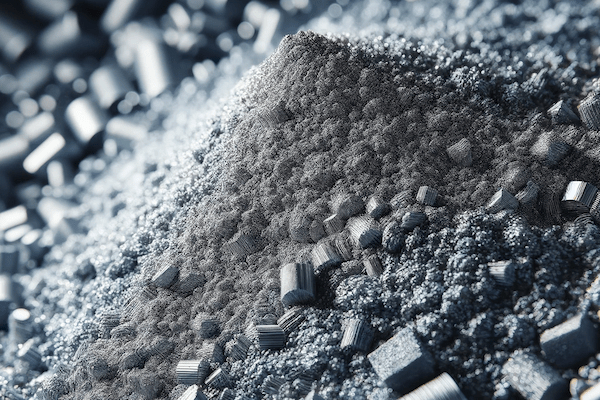
Aluminium powder for injection molding
The MIM process involves mixing metal powders with a binder material to create a feedstock. This feedstock is then molded into the desired shape. After molding, the binder is removed, and the part is sintered at high temperatures, causing the metal particles to fuse. MIM allows for the production of complex, high-strength parts with high precision.
Try Prolean Now!
Thermoplastic Raw Materials
Thermoplastic raw materials are fundamental in injection molding, offering remarkable versatility and efficiency. These injection molding raw materials are characterized by their ability to be heated, shaped, and cooled into a final form.
The following are the common raw thermoplastics:
- Polyethylene (PE): Lightweight and durable, Used in packaging, containers, and household items.
- Polypropylene (PP): Resistant to chemicals and fatigue. Ideal for automotive parts, medical devices, and textiles.
- Polycarbonate (PC): It offers transparency and high-impact resistance. Polycarbonate injection molding is suitable for eyewear, electronic components, and safety equipment.
- Acrylonitrile Butadiene Styrene (ABS): ABS injection molding combines strength, toughness, and thermal stability. Common in consumer electronics, toys, and automotive components.
- Polyvinyl Chloride (PVC): It is versatile and cost-effective, used in pipes, medical devices, and construction materials.
- Polyethylene Terephthalate (PET): Excellent clarity and barrier properties, commonly used in beverage bottles and food packaging.
- Nylon: High strength and wear resistance. Ideal for mechanical components, textiles, and automotive parts.
- Teflon(PTFE): It also can be injection molded. Teflon injection molding parts exhibit excellent chemical resistance, high-temperature stability, and low friction.
- Polyurethane (PU): Durable and flexible, used in foam products, coatings, and footwear.
- Thermoplastic Elastomers (TPE): It combines the properties of plastics and rubbers, used in seals, gaskets, and medical molding parts.
Raw Thermosetting Plastics
Thermosetting plastics are known for their high thermal stability and resistance to deformation under heat. They are essential in applications requiring durability and heat resistance. Their rigid and stable structure post-curing makes them ideal for high-strength, heat-resistant products.
Here are the various types of injection molding raw thermosetting plastics:
- Epoxy Resins: They are Known for excellent adhesive properties and electrical insulation, used in electronic components, adhesives, and coatings.
- Phenolic Resins: Offer superior fire resistance and mechanical strength, used in electrical insulators, kitchenware, and automotive parts.
- Unsaturated Polyester Resins: Provide strength, durability, and chemical resistance. Ideal for automotive body parts, construction materials, and marine applications.
- Melamine Formaldehyde: Exhibits high heat and fire resistance, used in laminates, tableware, and electrical components.
- Urea-Formaldehyde: Offers good mechanical strength and hardness. It is common in adhesives, coatings, and electrical fittings.
- Silicone Resins: Known for thermal stability and water repellence. Silicone injection molding is used in sealants, medical devices, and cookware.
- Polyurethane (Rigid): Provides excellent insulation and structural properties. Common in insulation foams, automotive parts, and construction materials.
Each of these thermosetting plastics brings a set of unique properties to the table, making them indispensable in their respective applications.
Metals & Alloys (MIM)
Metals and alloys are advanced injection molding raw materials, and molding is known as Metal Injection Molding (MIM). This process combines the design flexibility and efficiency of plastic injection molding with the strength and durability of metals to create intricate metal parts. The MIM process is particularly advantageous for producing small, complex parts with the mechanical properties of metal.

Injection molded metal parts
The following are the prominent metals and alloys in MIM:
- Stainless Steel: It is Known for corrosion resistance and strength and is used in medical instruments, automotive components, and consumer goods.
- Titanium: Offers a high strength-to-weight ratio and corrosion resistance. Suitable for aerospace, medical implants, and military applications.
- Aluminum Alloys: Lightweight yet strong, with good thermal conductivity. Common in automotive parts, electronics, and aerospace components.
- Nickel Alloys: Offers high temperature and corrosion resistance. These are used in aerospace components, the energy sector, and chemical processing equipment.
- Copper Alloys: They provide excellent electrical and thermal conductivity, used in electrical connectors, heat sinks, and decorative items.
These diverse material options not only open the avenues for unique product designs but also bring confusion regarding which one can be the best material for injection molding. The answer depends on the requirements of your project, desired properties, cost, etc.
Preparation of Raw Materials for Injection Molding
Preparing thermoplastics begins with material selection tailored to the product’s requirements. The chosen pellets or granules are then dried to remove moisture. This step is crucial; excess moisture can cause defects in the final product. Finally, the material is heated to its specific melting point, readying it for injection.
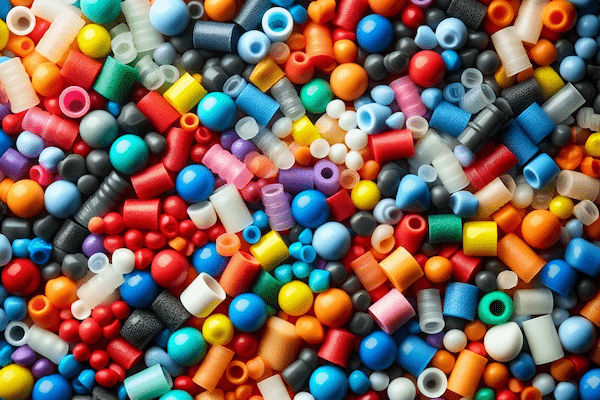
Raw injection molding materials
On the other hand, thermosetting plastics require a different approach. Initially, these materials are in a soft, solid, or liquid state. Precise measurement and mixing of the resin with hardeners or catalysts are essential. After mixing, the material is ready for the molding process.
Table: Preparation Processes of Injection Molding Raw Materials
| Material Type | Initial State | Preparation Process |
| Thermoplastic | Pellets or Granules | Drying to remove moisture, then heating to melt |
| Thermosetting Plastics | Soft solid or liquid | Mixing with hardeners or catalysts |
| Metal and Alloys | Metal powder mixed with a binding polymer | Creating consistent-sized feedstock granules |
For metal injection molding, the preparation starts with mixing metal powders with a binding polymer. This mixture, known as feedstock, is crucial for defining the part’s properties. The feedstock is then granulated into a consistent size, ensuring uniform flow and density during injection.
How to Choose the Right Raw Material for Injection Molding?
The material selection process mainly involves identifying the specific requirements of final products and the properties of various materials to balance many factors. These factors are injection molding cost, performance, environmental impact, etc. Furthermore, the correct selection ensures the product meets its intended function, durability, and aesthetic standards.
Here is the step-by-step elaboration to guide you to the best injection molding raw material for your project.
Step 1: Understand the Product Requirements
Start by thoroughly understanding the product’s purpose. Consider factors like strength, flexibility, heat resistance, and aesthetic needs. Each application demands specific material properties. For instance, a product exposed to high temperatures requires a heat-resistant material.
Step 2: Evaluate Material Properties
Research and compare the properties of various materials. Look into factors like tensile strength, melting point, and chemical resistance. Each material offers unique benefits and limitations. For example, thermoplastics are versatile and recyclable, while thermosetting plastics provide high thermal stability.
Step 3: Consider Cost-Effectiveness
Cost is a significant factor. Balance the material quality with budget constraints. Higher-quality materials can increase costs but offer better performance and longevity. Cheaper materials might reduce upfront costs but can compromise the final quality and durability.
Step 4: Assess Manufacturing Compatibility
Ensure the chosen material is compatible with your manufacturing process. Some materials require specific machinery or conditions for optimal molding. For instance, certain thermoplastics might need specialized equipment to reach their melting point.
Step 5: Factor in Environmental Impact
Consider the environmental implications of your material choice. Opt for eco-friendly or recyclable materials if sustainability is a priority. Materials like biodegradable plastics or those with a lower carbon footprint are increasingly preferred.
Step 6: Ensure Regulatory Compliance
Compliance with industry standards and regulations is mandatory. Some materials might be unsuitable for specific industries or applications due to regulatory restrictions and standards. Therefore, verify that your material choice aligns with these requirements.
Step 7: Conduct a Cost-Benefit Analysis
Weigh the advantages against the costs. High-performance materials might be more expensive, but they can add value to the product. Analyze if the benefits justify the additional cost.
Step 8: Consult with Experts
Lastly, consult with material experts or injection molding service providers. Their experience and knowledge can provide valuable insights, helping to make an informed decision. For instance, Prolean injection molding services can guide you through material selection, considering all relevant factors.
Try Prolean Now!
How to Retain Raw Material Properties in Injection Molded Parts?
Retaining raw material properties in injection molded parts starts with precise control of molding conditions. Critical factors include temperature, pressure, and injection speed. Each material requires specific conditions for optimal molding. For instance, too high a temperature can degrade thermoplastics, while insufficient pressure may lead to incomplete filling of the mold. As a result, injection molding parameters are essential to produce high-quality parts with original properties. Source.
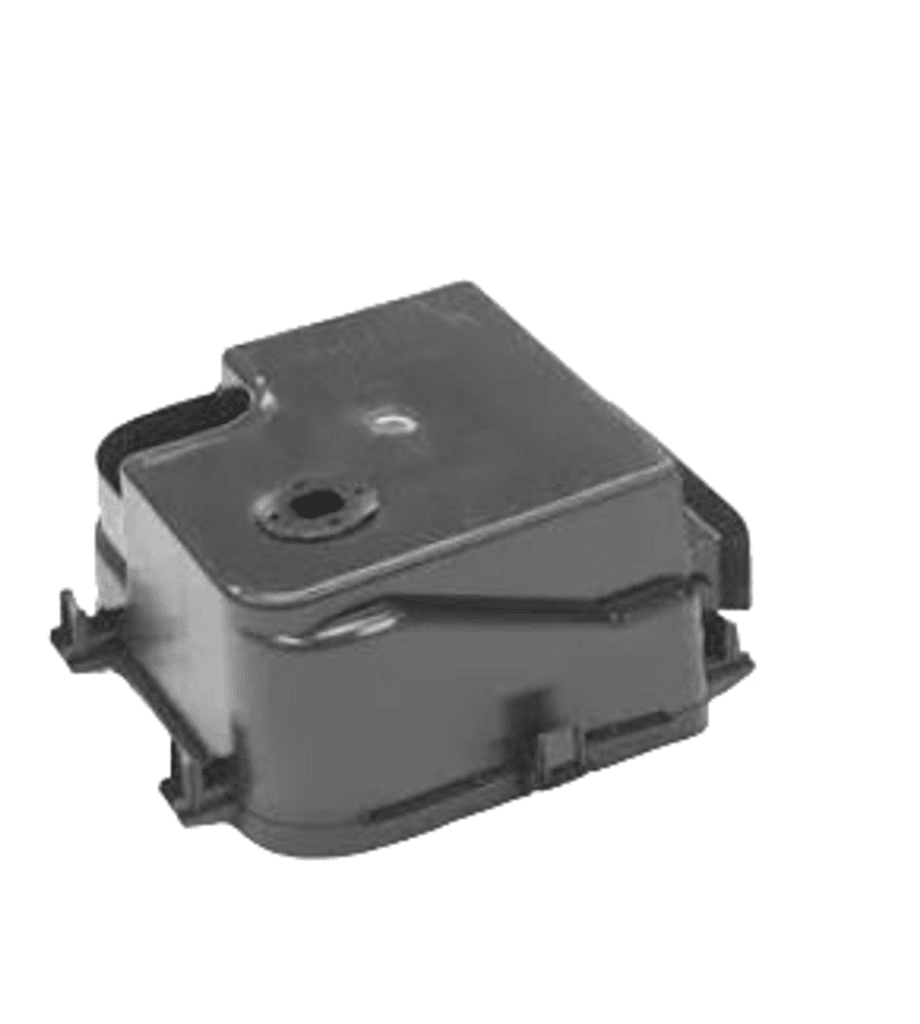
custom injection molded part
Next, material handling and preparation are equally important. It involves storing materials correctly to prevent degradation and pre-processing steps like drying. Here, drying is particularly crucial for hygroscopic materials like nylon, as moisture can affect the material’s properties and the final part’s quality. Consistent material preparation ensures the material retains its inherent properties during molding.
Furthermore, incorporating stabilizers and additives can also help preserve material properties. These additives are selected based on the material and desired properties. For example, UV stabilizers protect plastic parts from sunlight degradation. Meanwhile, impact modifiers can enhance the toughness of brittle plastics. Careful selection and use of these additives ensure the final part maintains the material’s essential qualities.
We Convert Every Injection Molding Raw Material Into the Final Product at ProleanTech
At ProleanTech, we excel in selecting the ideal raw materials for each project. Our expertise spans many materials, from standard thermoplastics to advanced composites. We understand that each project is unique. As a result, we can tailor our material choices to meet specific client needs.
Our injection molding services utilize advanced techniques and machinery. This ensures high precision and quality in every product, from Mold manufacturing and rapid prototyping to large-scale production. Subsequently, our advanced technology allows us to handle complex designs and maintain consistency across all production scales.
Overall, ProleanTech is committed to delivering quality and efficiency. Our meticulous approach to molding ensures that every product meets stringent standards. We pride ourselves on transforming raw materials into high-quality final products, reflecting our dedication to excellence in injection molding services. So, send us your design for the injection molding quotes. Our engineers will reach out to you with detailed and accurate information for your project.
Try Prolean Now!
Summing Up
Injection molding is a versatile process in modern manufacturing. It involves melting and injecting raw materials into molds to create various items. The diversity of these materials brings unique properties, enabling the creation of parts for industries ranging from automotive to consumer products. Understanding the types of materials — thermoplastics, thermosetting plastics, and metals — is crucial for optimizing product design and functionality.
FAQs
What are the key types of injection molding raw materials?
Key types are thermoplastics, thermosetting plastics, and metals & alloys, each with distinct properties for diverse applications.
Why is material selection important in injection molding?
It influences the product’s quality, performance, and suitability for specific applications.
What properties are essential in choosing injection molding materials?
Properties like strength, flexibility, heat resistance, and aesthetic appeal are critical.
Can thermoplastic materials be recycled after injection molding?
Yes, most thermoplastics can be recycled, making them environmentally friendly.
How does ProleanTech ensure quality in final products?
Through meticulous material selection, advanced molding techniques, and stringent quality control.
Resources
- Singh, G., & Verma, A. (2017). A Brief Review on Injection Moulding Manufacturing Process. Materials Today: Proceedings. https://doi.org/10.1016/j.matpr.2017.01.164

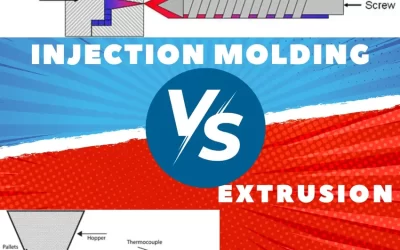
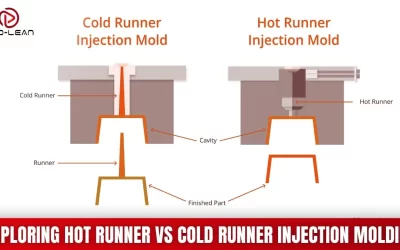
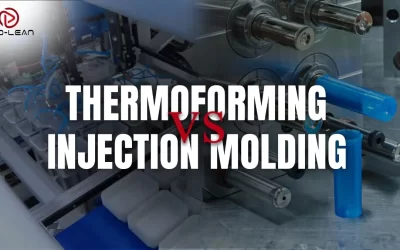
I found this article very professional ! We are a mold prototyping company based in Germany and looking for injection molds in small volumes ( 100-200) . Do you think you can make cost-effective with these orders.
Although the production volume increases the per mold cost, we have a dedicated service facility for prototyping and small volume production. So, we can be cost competitive in small batch orders! If you have your design ready, you can upload and request a quote to know about project budgeting. https://proleantech.com/get-a-quote/